This article is written by Joshan. At the beginning of the year, Joshan visited the country of Mount Everest, his homeland, with a couple of friends and shares his experiences and valuable tips on wavesnbackpack about backpacking in Nepal.
What clothes should I pack?, asked a friend going through his checklist.
Prepare for anything between 0 to 40 degrees. They thought I was joking. I wished I was. But I was committed to keeping them safe and warm. I was going back home to Nepal and taking three of my very good friends for an adventure in Nepal, here we come!
Backpacking in Nepal – Good to know
The southern part of the country lies at about sixty meters from sea level and soars to the top of the world towards the north. All that variation of 8600 meters within the north-south distance of 193 kilometers, crazy right? Our trip was during early May. By then, temperatures already start soaring high across the southern plains while the northern mountains are still covered in snow.
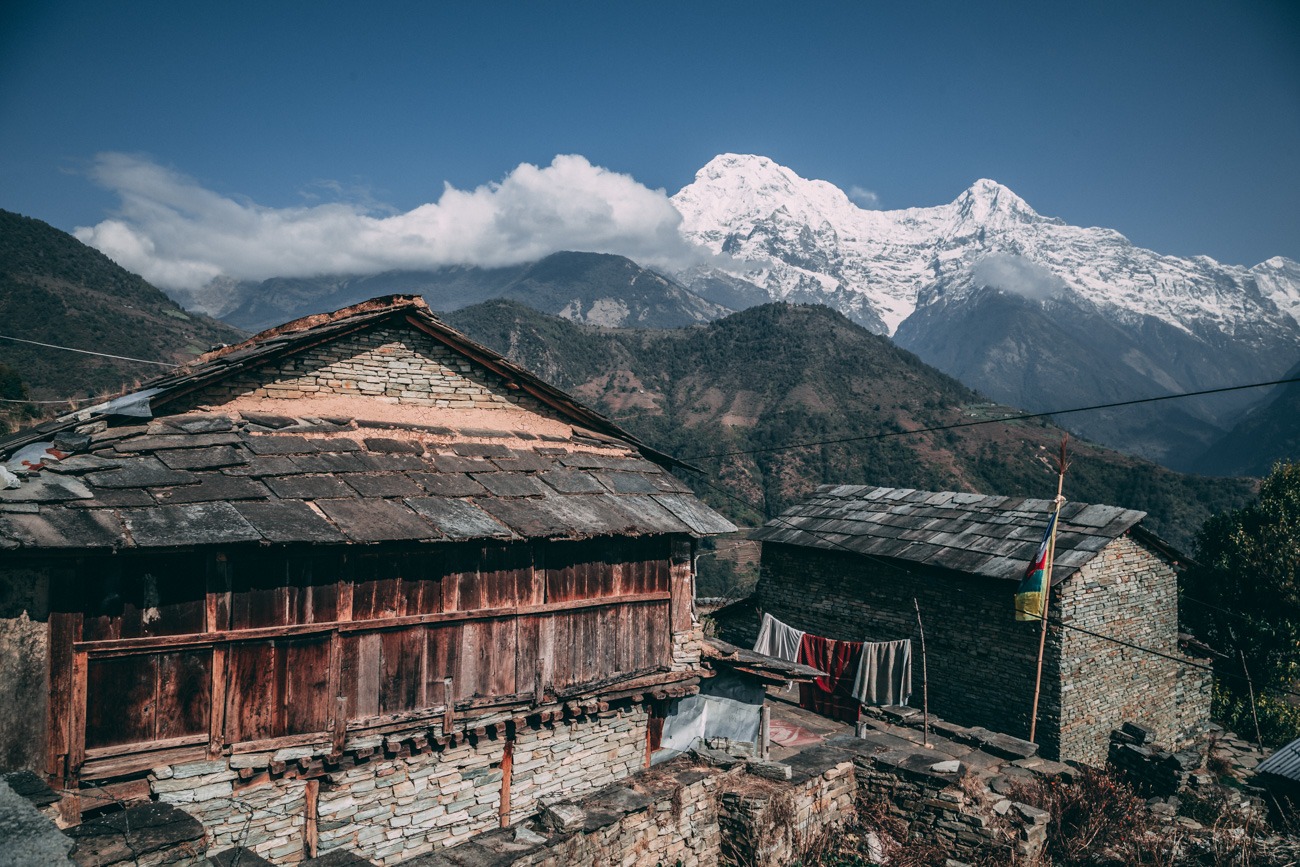
While the flight is descending towards Kathmandu, you can already witness the majestic mountains rising above the clouds. A rush of excitement is inevitable. After leaving the airport, the first few experiences might be overwhelming or shocking for some because of the crowded streets, dust, unmanaged urbanscape, reckless drivers, etc. It is not the fairy-tale-snow-clad mountain land that you had imagined. There are no stop signs, no sidewalks, no rules. You kind of figure it out that everything functions together somehow. But if you are open-minded and willing to set your foot outside of your comfort zone then one of the best adventures of your life awaits you ahead.
The country, people, food and culture
Nepalese people are usually very friendly and relaxed people. Do not forget to greet them with a ‘Namaste’. It is how they say hello and they absolutely love it when they are greeted by foreigners. Bhat (rice), dal (lentil soup), tarkari (curry), achar (pickle) makes their main dish and people consume it twice a day, even three times in some regions. The majority of Nepalese eat this main dish with their hands. Give it a try, ask the locals for instructions; they will be delighted to help you. Raksi, Chyang and Tongba are the Nepalese special homemade liquors. Drinking water situation is poor in the capital and in most of the cities. Drinking bottled water will save you from lots of trouble. There is big difference in climate in a different parts of the country. So, research ahead and pack appropriate supplies for your trip. Road trips are usually scenic but tedious through treacherous mountain roads. Also, make sure to pack extra toilet paper rolls and be aware of the fact that most non-touristy places still use squat toilets.
Stop #1: Kathmandu, the city of temples and stupas
Things to do in Kathmandu
Kathmandu Valley has three Durbar Squares. Basantapur (Kathmandu) Durbar Square, Patan Durbar Square, and Bhaktapur Durbar Square. These are the old towns of Kathmandu Valley and exhibit ancient art forms, architecture, religious values and lifestyles. All of these squares have beautiful temples, ancient palaces, art and history museums and amazing food spots. Basantapur, also being the main center of the city is busier compared to the other two. It is surrounded by a maze of narrow shopping streets, and ‘Freak Street’ because it is freaking awesome. Patan and Bhaktapur are equally amazing as well and offer famous traditional newari food and liquor spots. Sadly, many iconic temples in Basantapur and Bhaktapur area were destroyed during the earthquake of April 2015.
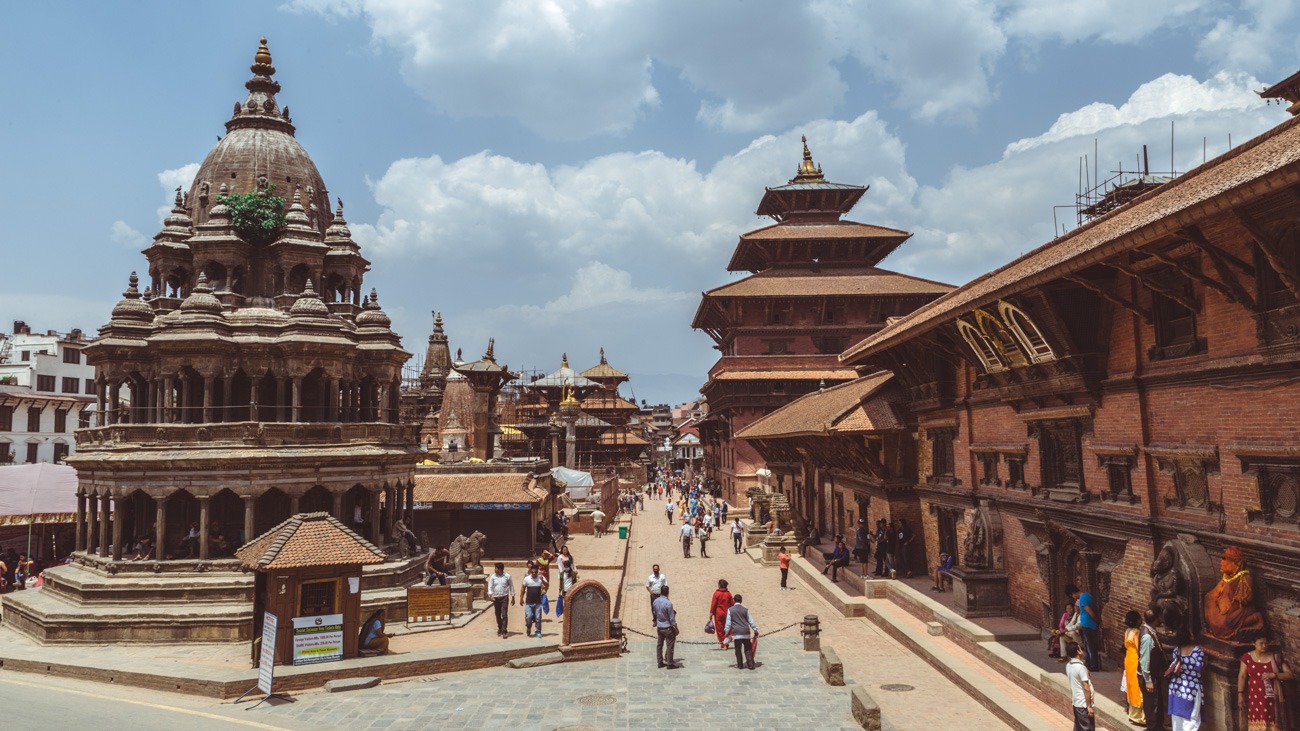
Swayambhunath, also known as ‘The Monkey Temple’, is one of the holiest Buddhist stupas in Nepal. The stupa is believed to be the oldest of its kind in Nepal and exhibits religious harmony among the people as Buddhists, Hindus, Muslims and people of all religions visit and enjoy this monument equally. Resting atop a small hill, it boasts a stunning panoramic view of Kathmandu Valley with the misty mountains in the background.
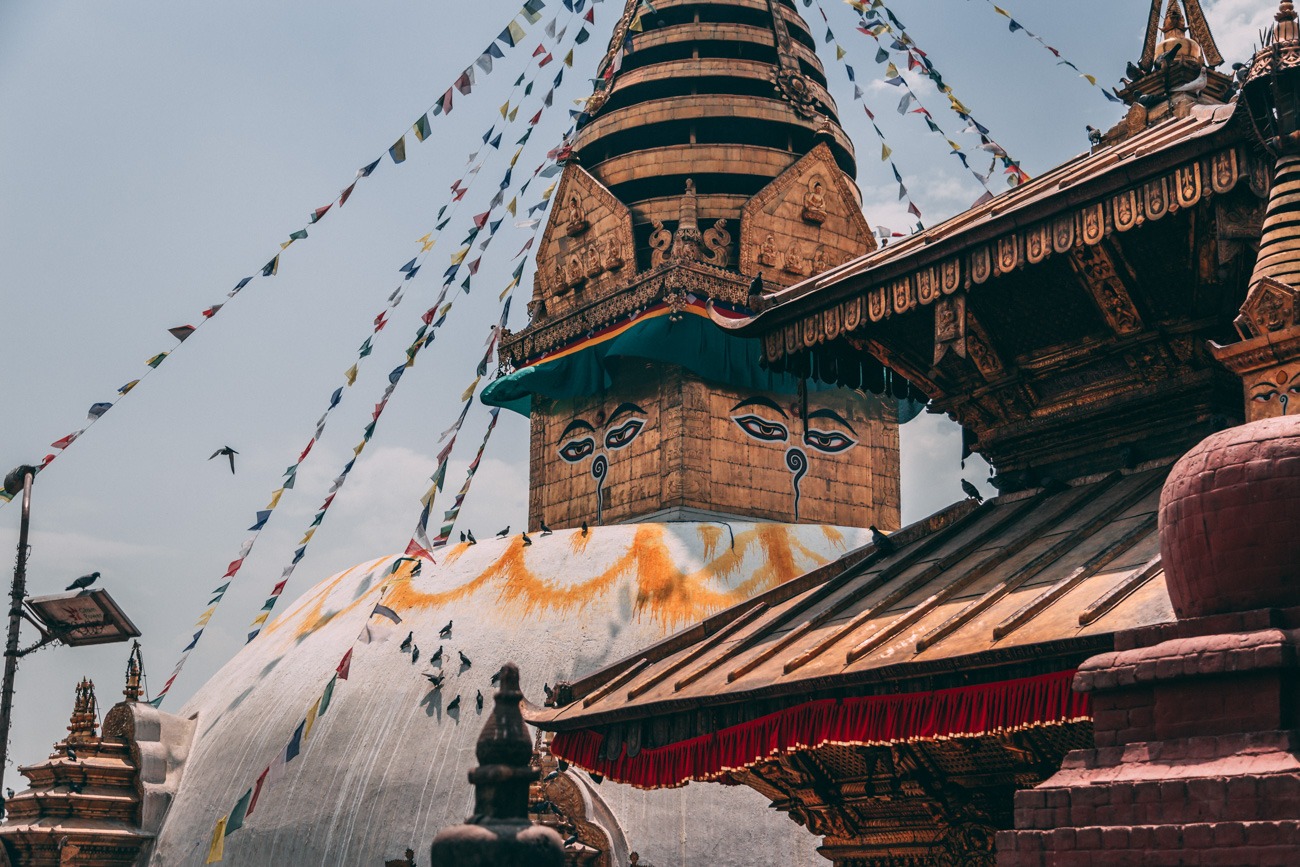
Thamel is the happening quarter of Kathmandu. The streets are filled with shopping lines, restaurants and rooftop bars. As evening approaches, the streets become vibrant with dwellers, hippies, backpackers and live music. It is busy and chaotic but mesmerizing. A very important warning for shoppers is that shopkeepers tend to overprice the items. Try out different shops and know the reasonable price before buying any souvenir.
Stop #2: Chitwan, a blend of wildlife and culture
Things to do in Chitwan
Chitwan National Park is a World Heritage site and it Iies in the Southern plain lands of the country. Over 932 sq kms of protected area is renowned for its protection of One Horned Rhinoceros, Royal Bengal Tiger and Gharial Crocodile.
It is also a heaven for bird spotters with 544 species of birds recorded in the area. You can do a guided jungle safari trip and explore wildlife in their natural habitats. Spotting rhinoceros, deers, wild boars, monkeys and birds are common.
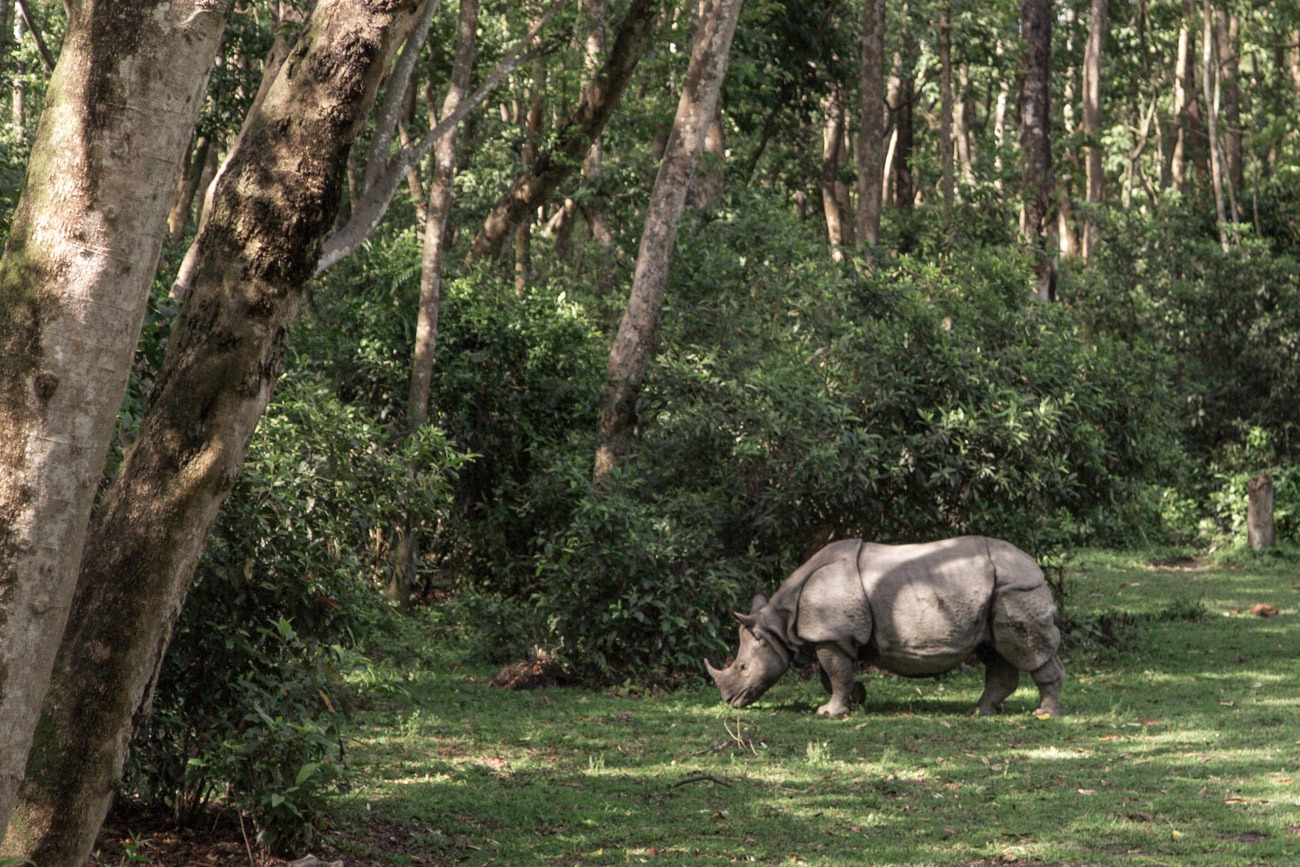
But if luck is in your favor you might get the once-in-a-lifetime opportunity to spot a Royal Bengal Tiger while Backpacking in Nepal. If that is not enough adventure, then you can do a guided boating trip in the crocodile filled Rapti river. You can witness crocodiles sunbathing along the river banks or just swimming across your boat minding their own businesses.
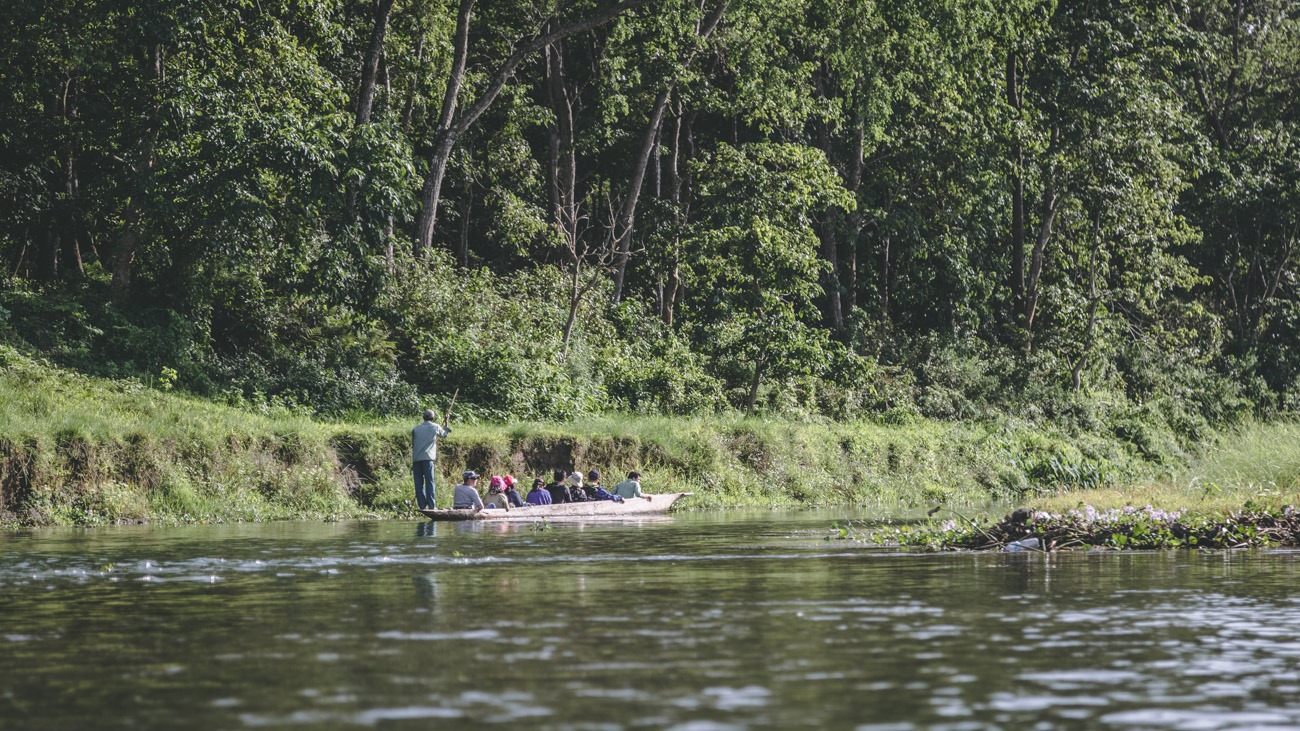
Sauraha is a little Tharu (the local people of this region) village which is the main entry point to the National Park. The village provides good accommodation, traditional tharu meals, and cultural shows. Jungle safaris, elephant ride or canoeing can be arranged from here.
Stop #3: The vibrant Pokhara
Things to do in Pokhara
Pokhara is the tourist capital of the country. It is equally famous among the locals and foreigners. Stunning sceneries, adventure activities, good food, this place has it all. Lake Fewa is the most famous location in Pokhara. You can take a hand carved row boat to the middle of the lake and enjoy tranquility. The view of the Fishtail mountain or the view of sunset behind the layers of hills as far as you can see in the horizon is just spectacular. If you are more adventurous type then paragliding, mountain biking, bungee jumping, white water rafting and zip lining are the way to go. The evenings here are filled with tourists, backpackers and locals. You can hear live music echoing through every other restaurants and bars. Delicious food, shopping streets, happy people and activities, Pokhara is the perfect blend of adventure, chill and tranquility.
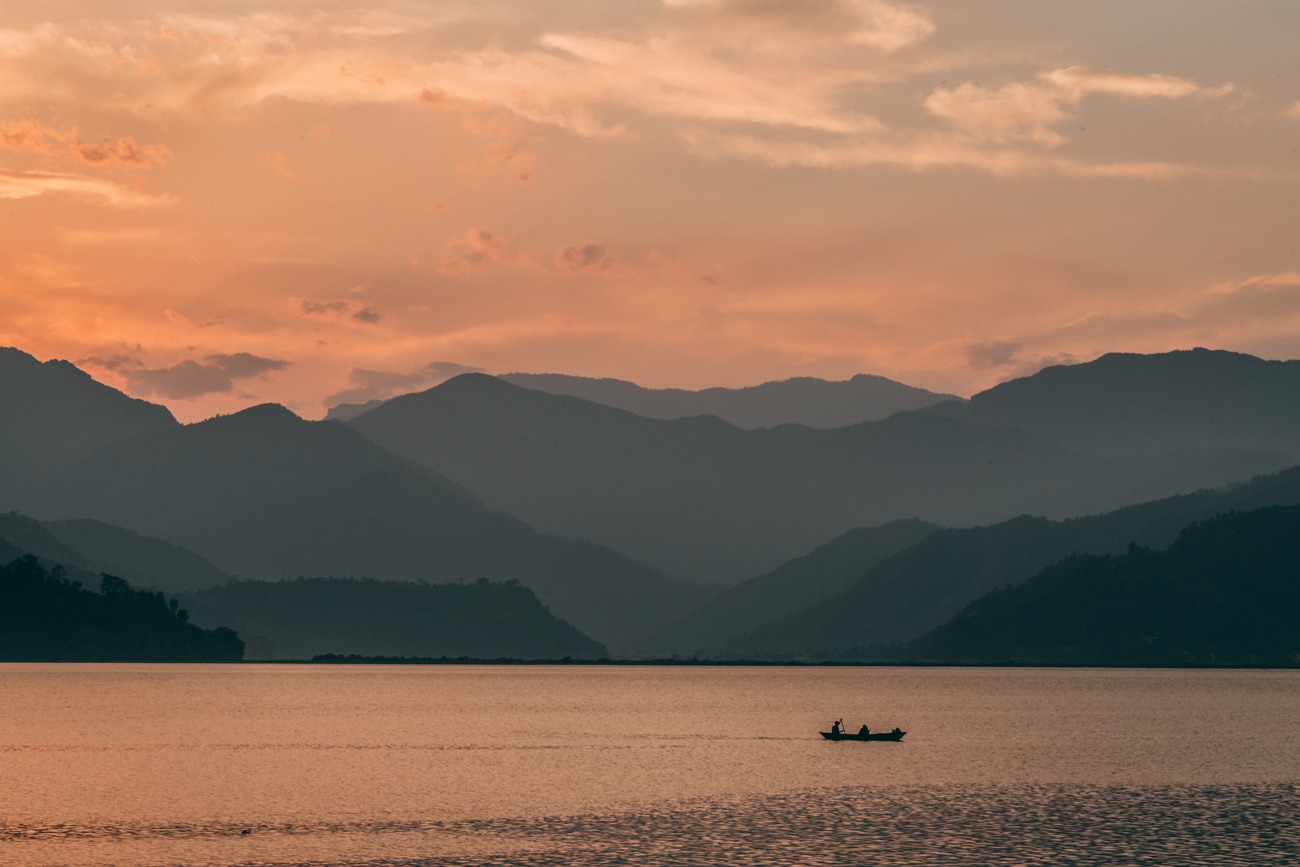
Pokhara is the gateway to the world renowned Annapurna Trekking Circuit. All the necessary equipment, documents and permits can be obtained from Pokhara and Kathmandu.
Stop #4: Mesmerising Ghandruk – Poonhill trek
Things to do in Ghandruk
If you have enough time do not miss the Annapurna Base Camp trek or the Annapurna Circuit trek. It is absolutely mind blowing. Ghandruk – Poonhill trek is one of the easier 3-5 days trail in the Annapurna Circuit. Foreigners need Trekking Permit and TIMS card to enter the Annapurna Conservation Area.
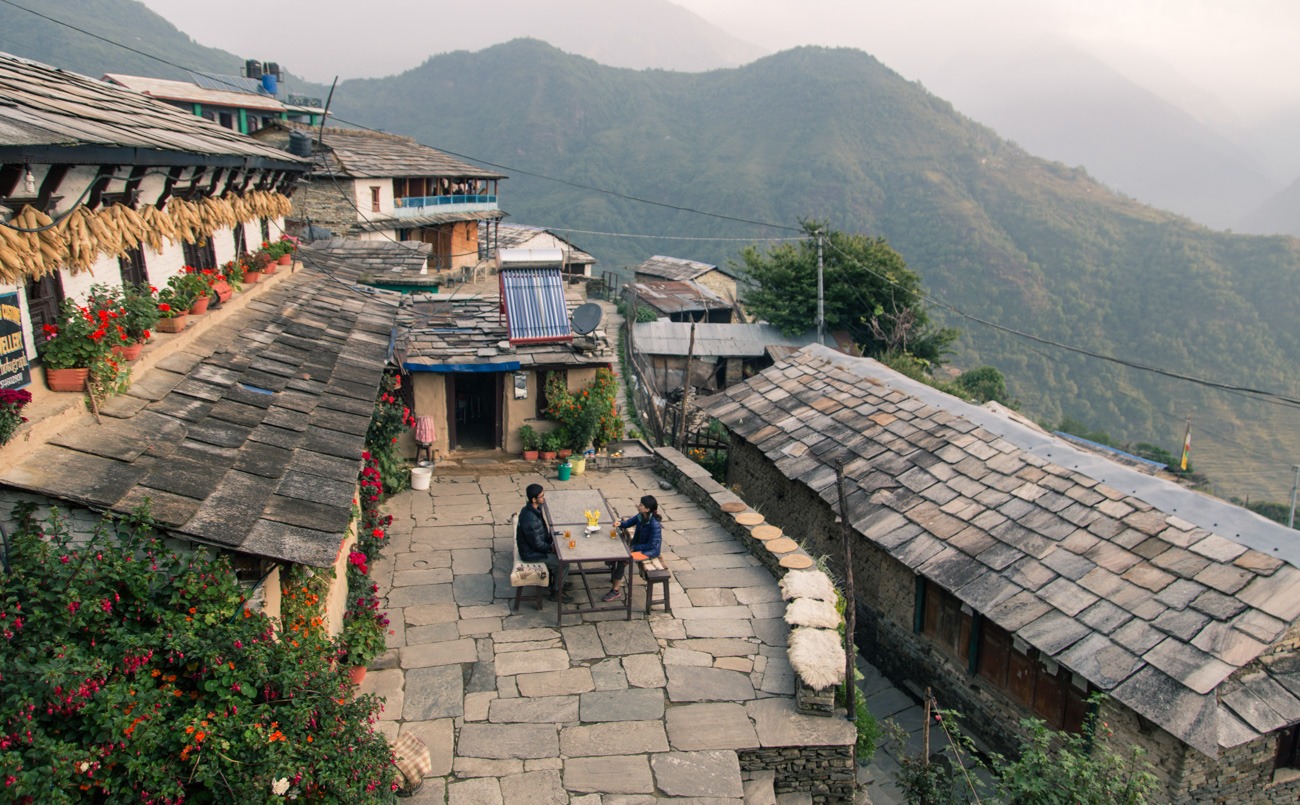
The Ghandruk – Poonhill trek lies towards the easier spectrum among trekkers but is equally famous among beginners and advanced trekkers. The day starts with a two hours jeep ride from Pokhara. The later part of the drive goes uphill through harsh dirt road. After the jeep ride and around 45 minutes walk you reach the beautiful village called Ghandruk (approx. 1940 m). Make sure to spend at least a day here. Gurung people are the main inhabitants here and you can experience their culture, home-grown food and lifestyle. Even more exciting is that you can see Annapurna South, Machhapuchhre, and Himchuli standing tall right in front of you. The serenity and sheer beauty of this place will make you forget about all your troubles and put you in absolute peace of mind. The narrow stone paved paths, small slate-roofed houses, terrace farming, green hills and snow capped mountains as backdrop, it is hard to say goodbye to this place.
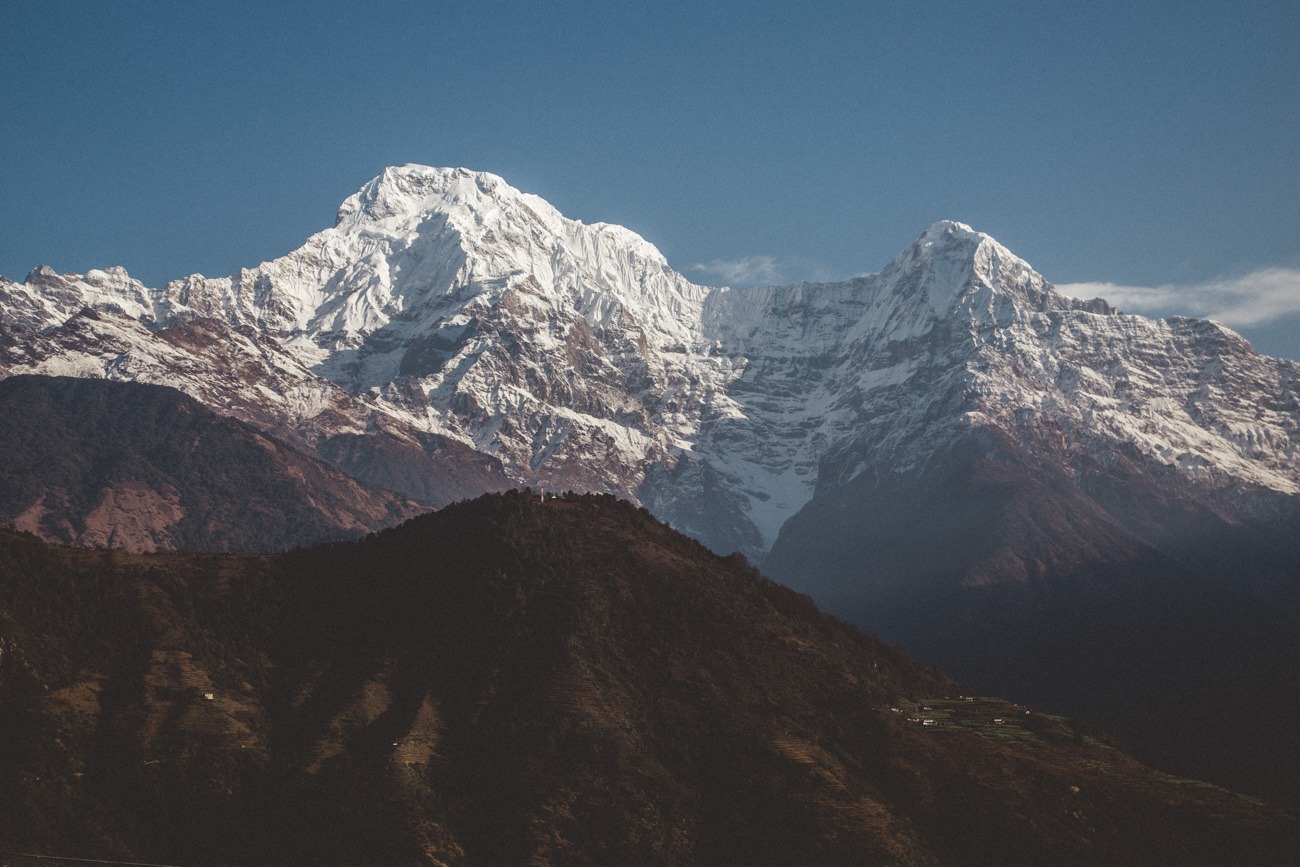
The trekking proceeds through cloud and fog, magical forests, and brooks of icy blue water. There are rest stops and water taps along the path. The more ambitious ones aim to reach Ghorepani (approx. 2760 m) while others stop halfway through at Tadapani for a night. Almost everyone you pass by en route will greet you with a smile and Namaste. Ghorepani, the gateway to Poonhill, is another small village and feels slightly modern and commercial than Ghandurk. People generally spend a night here and prepare for next day’s uphill trek to Poonhill.
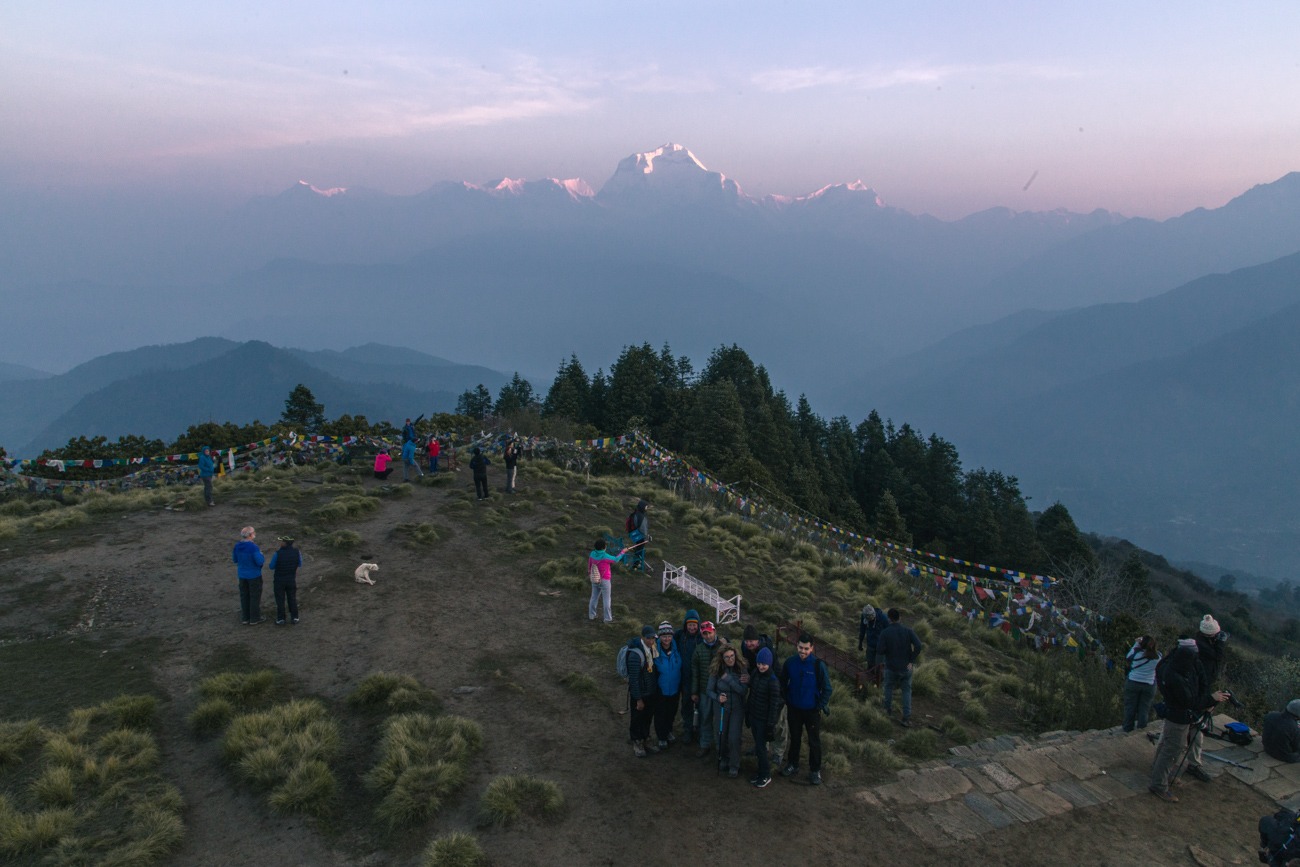
Poonhill, situated at 3210 meters, is a famous hill-top view point with breathtaking panorama of mountain ranges with some of the highest Himalayan peaks like Annapurna I, Annapurna South, Himchuli and Dhaulagiri. Visitors start the the 45 minutes Ghorepani-Poonhill trek as early as 4 am in the morning to catch the sun rise from behind the snow-clad peak of Annapurna. The fresh mountain air and the magnificent sight will take all your tiredness away.
In the end
Nepal is synonymous with mountains. It is how Nepal is known around the globe. But there is more to explore. The untouched nature, the warm-hearted people and the unique culture will make you fall in love with the country. It is a poor country with lots of domestic problems but people always manage to stay humble and smile through all their hardships. You will come back not only with great adventure stories but also with tons of positive inspiration. Happy backpacking in Nepal 🙂


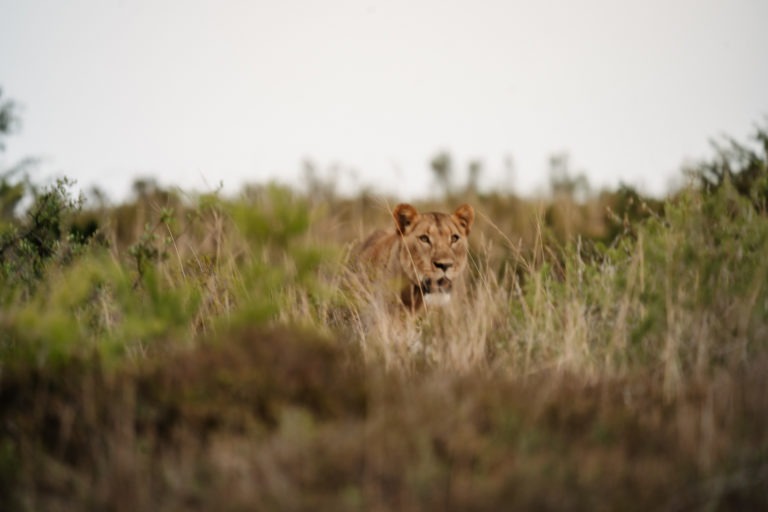
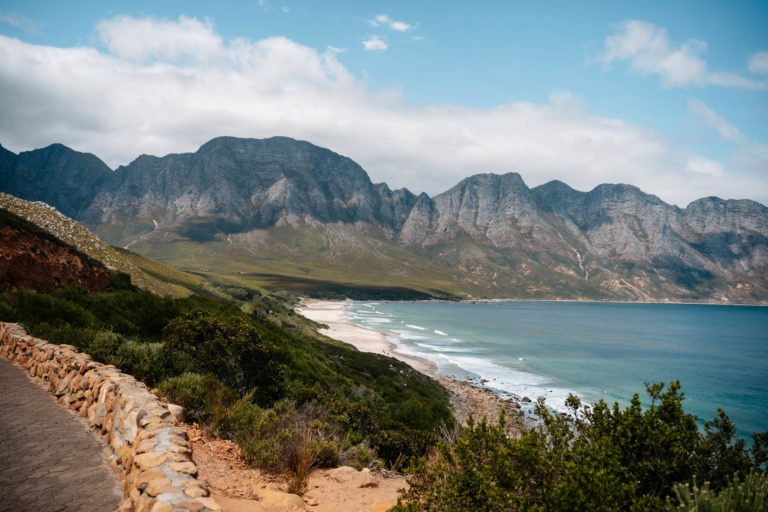
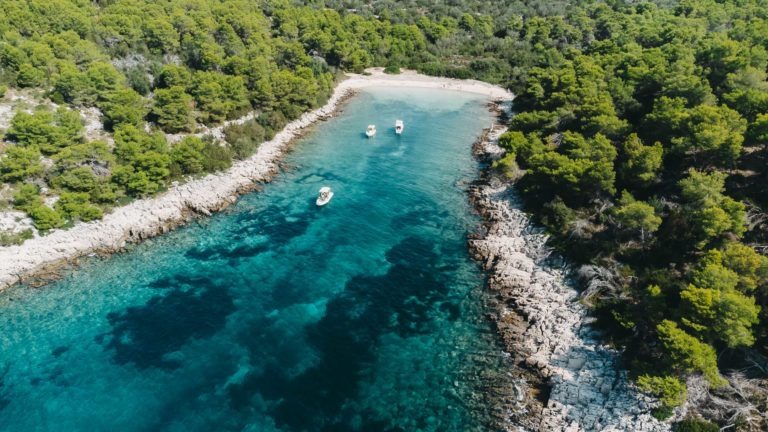
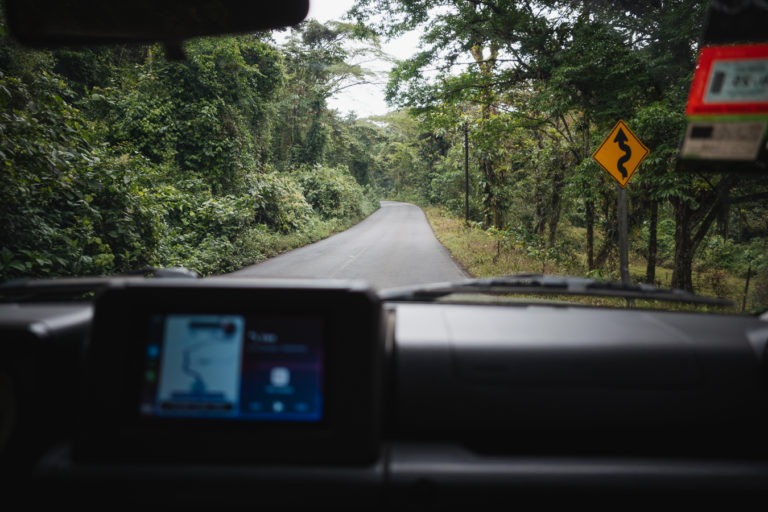
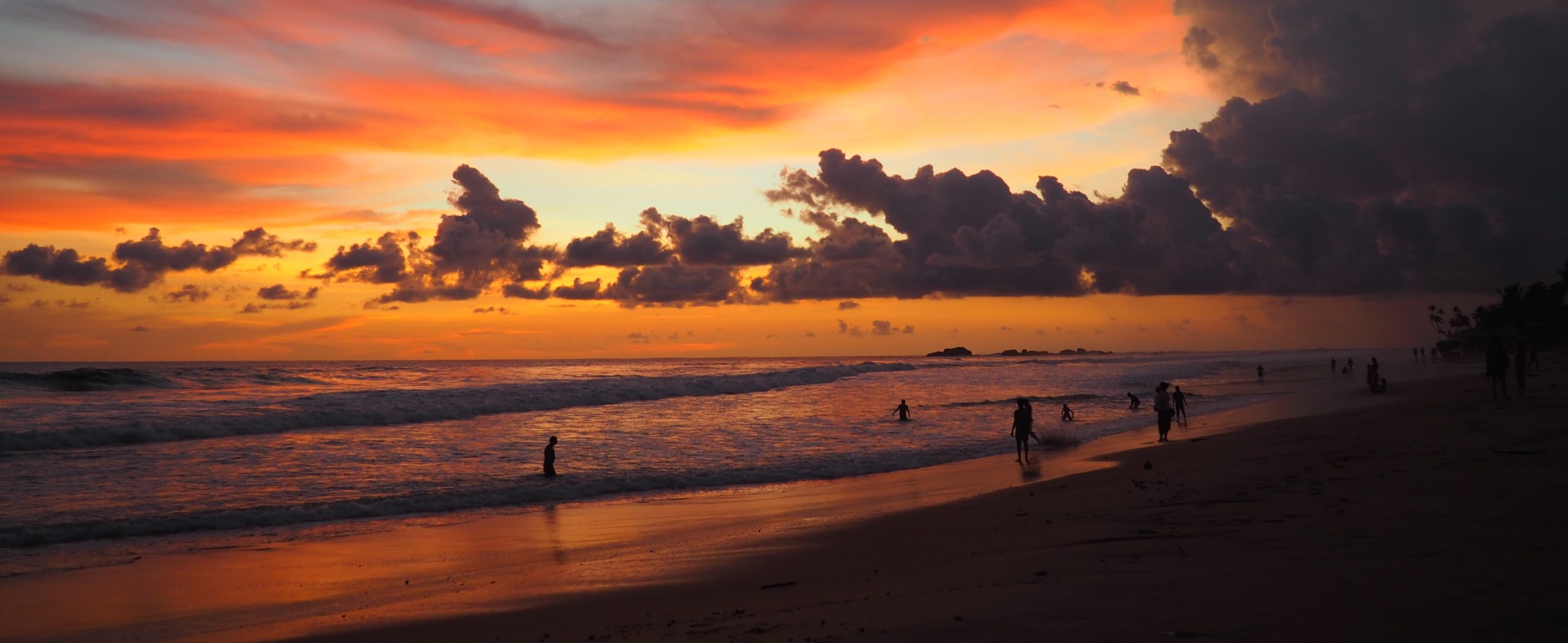
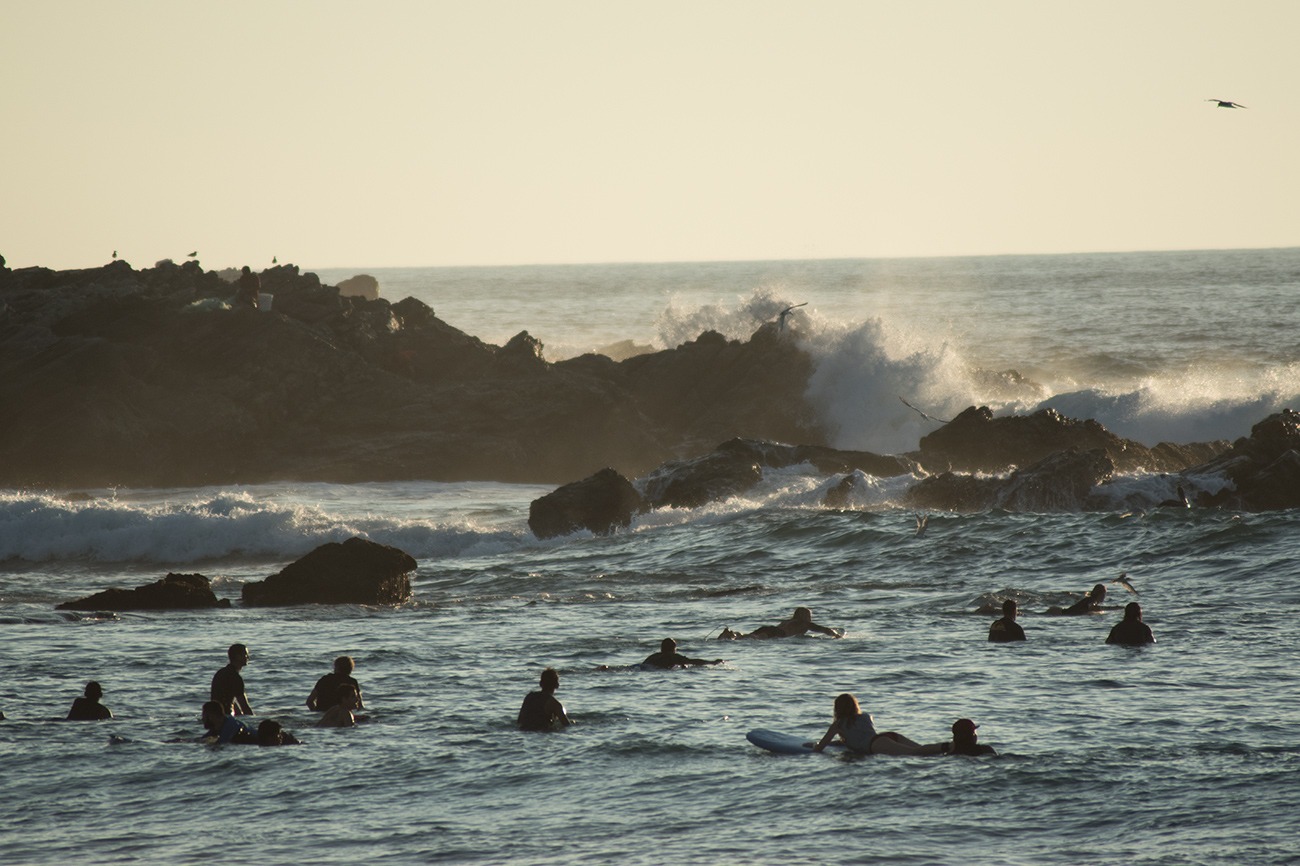
2 Responses
Thanks for such a wonderful blog, the article is very informative!
Thanks a lot! 🙂